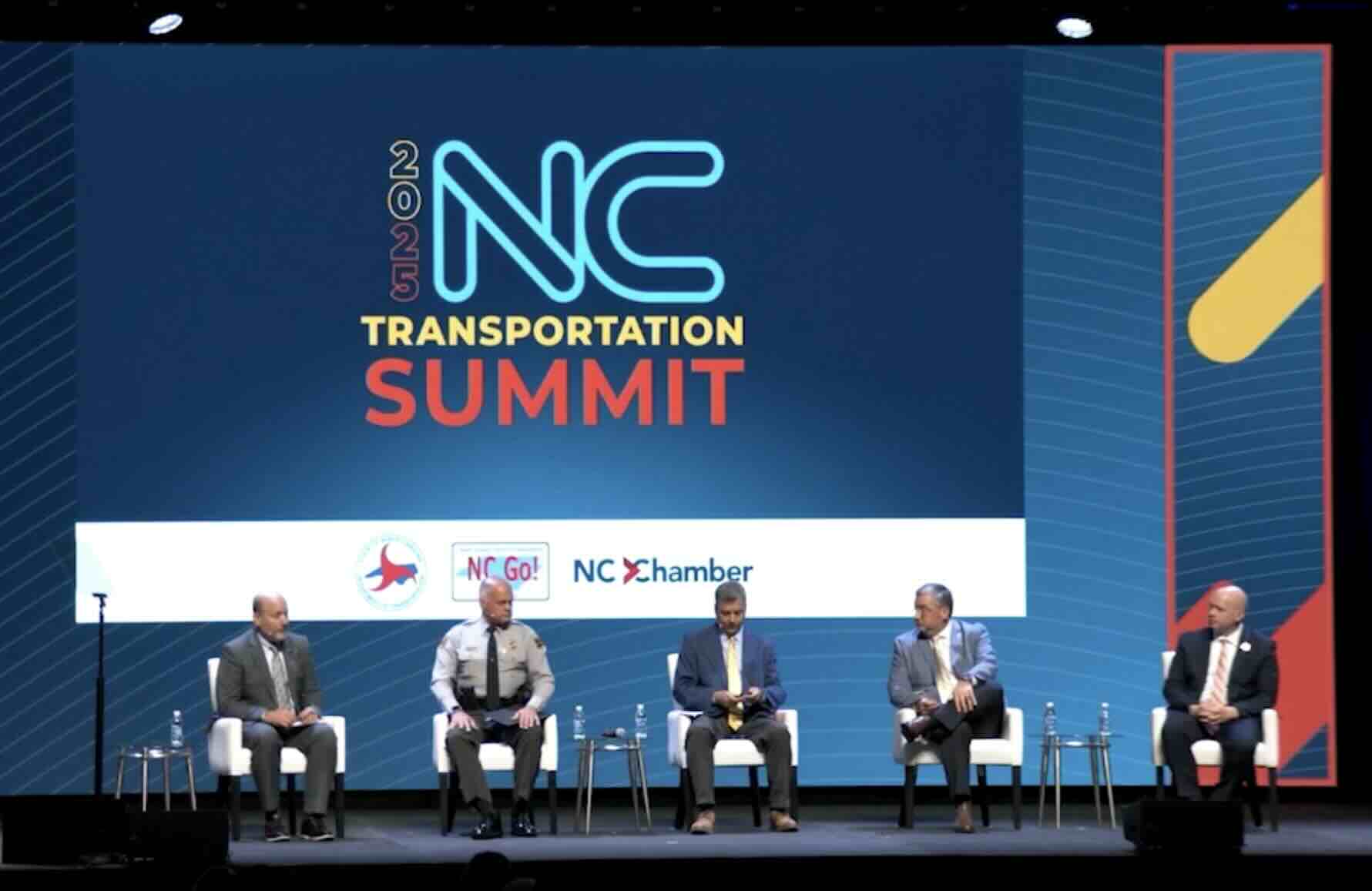By Jordan Meadows
Staff Writer
Last Wednesday and Thursday, the Raleigh Convention Center became a hub of innovation, strategy, and reflection as the North Carolina Department of Transportation (NCDOT) hosted its sixth annual North Carolina Transportation Summit.
The two-day event brought together over 1,000 attendees and 70 vendors, aiming to tackle some of the state's most pressing transportation challenges—from disaster recovery to cutting-edge technology, workforce expansion, and long-term infrastructure planning.
The summit took place at a critical juncture for North Carolina. The western part of the state is nearing the one-year mark since Hurricane Helene devastated infrastructure and communities. NCDOT estimates the storm has cost nearly $5 billion in recovery efforts, with full recovery projected to take five years.
Governor Josh Stein, opening the summit, offered a message of cautious optimism:
“It is nevertheless astounding to think of the progress that we've made in this recovery in just under a year since Helene,” said Stein. “It's also important that as we have been rebuilding, we're doing so with resilience in mind. That way, if another storm hits, when another storm hits, Western North Carolina's roads and bridges can better withstand its impact.”
NCDOT Secretary Joey Hopkins further outlined the damage and recovery in the first main breakout session, reporting that Helene created about 9,400 damage sites, resulting in 1,400 road closures—including 41 interstates and 123 U.S. routes. Today, only 35 closures remain.
One of the most anticipated speakers on Thursday was Paul Tine, the newly appointed DMV Commissioner, who shared plans to overhaul the state's DMV experience. Tine emphasized reducing wait times, increasing staffing, and using advanced technology:
“Our vision is to be like a bank,” he said. “You show up, you might have a 15-minute wait. You have a 15-minute transaction, maybe a 10-minute transaction. You're on your way.”
Tine revealed the average wait time was 2 hours and 45 minutes—a statistic the DMV only recently became able to track accurately. He noted that new scanners and data systems have already reduced tens of thousands of physical interactions.
The DMV also hosted a career fair during the summit to bolster staffing efforts, particularly for driver’s license examiners.
Tine’s panel featured leaders from surrounding states like South Carolina’s Kevin Shwedo, Executive Director of the SCDMV, and Virginia’s Gerald Lackey, Washington Metropolitan Area Transit Commission (WMATC) member, who added that his team has been integrating AI:
A standout announcement came from the N.C. Turnpike Authority, which is partnering with Volvo and Mastercard to launch a pilot program allowing drivers to pay highway tolls directly from their car’s infotainment system.
Volvo’s Jim Nichols said the company’s app, built on a Google platform, may soon be available in other vehicles. The program is expected to begin later this year and will make North Carolina the first state in the U.S. to pilot toll payments via in-car infotainment.
Another breakout session, “Solution or Setback? Using AI to Maximize Operations and Minimize Spending,” highlighted ongoing debates about the role of artificial intelligence in transportation—focusing on how it might optimize traffic flows or pose long-term challenges.
Raleigh Mayor Janet Cowell addressed the city’s infrastructure challenges and emphasized the need for state and federal partnerships:
“We are investing, but we really need the partnership with the state and the federal government,” said Cowell. “The 50% increase in land values over a short period of time plus inflation meant some of the traditional models of building infrastructure just weren't working.”
Cowell also touched on projects like bus rapid transit, major highways, and bridges, as well as efforts to attract festivals and sports franchises, including a potential Major League Baseball team.
“Raleigh is going to be one of the finalists on the East Coast at the end of the day,” said Lou Pascucci of MLB Raleigh. “Population radius, census radius, and you look at the population within a certain number of miles, there's a ton of people here.”
The event featured an array of notable speakers, including:
Marc Finlayson, NC Go!, Chair; Gary J. Salamido, President and CEO of the N.C. Chamber; Chair Anthony Lathrop, N.C. Board of Transportation (Emcee); US Deputy Secretary of Transportation Steven Bradbury; Garner Magnet High School JROTC and Ladies in Red (NCSU) performed the Presentation of Colors and National Anthem, respectively.

